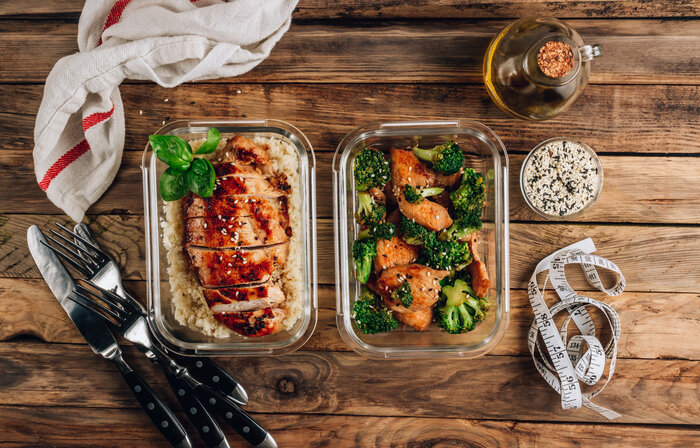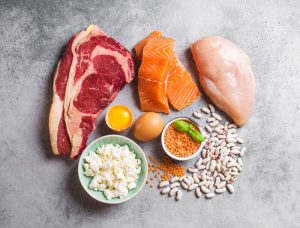

For years, the human race has explored multiple and various types of diets. From juice-fasts to low-fat diets, paleo diets, to keto diets the list goes on and is virtually never-ending. Some are more successful than others, but one thing about these diets is the way they will affect your workout.
One diet that has stuck around for over a century is the ketogenic diet, more commonly known as the keto diet. It was first introduced in the 1920s by physicians to treat epilepsy. As antiepileptic drug treatment came about a couple of decades later, this diet soon became popular for people wanting to lose weight.
Let’s explore the keto diet and how you can work out safely to ensure maximum results and effectiveness.
Based on eating minimal carbohydrates, high proteins, and fats, the idea is to cut back on easy-to-ingest sugars, such as soda, white bread, and sugar itself, and eat more fats and proteins. After some time, your body will be forced to burn fats for energy instead of carbohydrates, thus leading to weight loss.
The keto diet doesn’t come without some drawbacks, and it’s important to be aware of them before you start. These may include constipation, nutrition deficiency, low blood pressure, and increased risk of heart disease. Make sure you consult a dietitian and talk with your doctor to ensure you are safe and on the right path to reach your goals.
Exercising is essential to building a healthy body through an active lifestyle. Normally, your body gets its energy from carbohydrates, which fuels you through all types of workouts, especially high-intensity workouts such as sprinting, swimming, and boxing. However, if you are on a keto diet, your body doesn’t have the same fuel for these workouts, so a keto diet isn’t best suited for these types of exercises.
The best types of workouts on a keto diet are low-intensity: Jogging, cycling, rowing, or yoga are all ideal for your workout routine when in ketosis. Any exercise where you can maintain your speed and strength level for a set period is better than quick and high-intensity exercises.

Despite having extremely low carbohydrate intake, you can follow some essential tips to make sure you prioritize your body through your diet to exercise as effectively as possible.
The average person on a keto diet tries to keep their carbohydrate intake to 20-35g a day. For reference, that’s equivalent to 1 large banana, or 0.8 of a pancake, or 0.7 a cup of pasta. It’s not very much. Smart carbohydrates are usually chosen by someone in ketosis, including vegetables, fruits, pulses, legumes, and whole grains such as brown rice, quinoa, or oats.
If you’re planning on working out, you must eat your choice of carbohydrates within half an hour of working out. It’s also not a bad idea to up your intake of carbohydrates on a big workout day before you exercise.
Good News…
If you choose to have smart carbohydrates and do some exercise right after, this shouldn’t kick you out of ketosis. Your body will immediately use all the glucose during your workout, and you will remain in ketosis.
Strive to eat 0.6-0.9g of protein per pound of body weight every day during your keto diet. Adults that weigh 150g should eat between 90-135g of protein to ensure their muscles are built and maintained.
Exercising on a keto diet requires you to eat enough protein that is in line with the type of exercise you are doing. Lower-intensity exercises may allow you to eat less protein, but you’re the judge of that.
Eating just chicken or eggs is not a good way to ensure your daily protein intake is reached. Balancing your protein sources is the best way to ensure you have a varied diet and you’re getting your protein intake at the same time.
Beef, chicken, pork, eggs, fish, shellfish, and low-carb protein powders are all ideal protein sources during a keto diet.
Don’t eat your daily amount of protein in the first meal of your day. Also, don’t wait till the evening for a large evening meal filled with protein. Spread your protein consumption around to eat around 20-25g per meal. Any more intake of protein may lead to a disruption of ketosis. If you eat around 4 meals a day, this is around 80-100g of protein a day.

Keto diets are focused on burning fats rather than carbohydrates. For that very reason, high-intensity workouts are not ideal as you may feel very drained with limited performance capabilities. You are likely to get more tired quicker and decrease your peak power.
This is because it is harder for your body to burn fats rather than carbohydrates. Therefore, limiting high-intensity physical activity is important during your keto diet. Low-intensity exercise is better for your body to reach your exercise goals, not burn out, and have stronger endurance levels. During a low-intense cardio workout, you will work out at a steady pace for around 50-60% of your maximum ability and heart rate for around 30 minutes.
That being said, you may find that even some low-intensity training such as strength training, cycling, or some relaxed swimming may be too difficult for you as well. Try to find easy exercises such as light walks, beginners yoga, or an extremely light jogging pace to find what works for you and where you feel your best.
Many studies have been conducted that point to evidence that exercise does well at burning fat during low-intensity workouts. Low to moderate-intensity exercise during a keto diet has been shown to speed up weight loss by raising your metabolism.
However, the complete opposite has been found with high-intensity workouts, where a low carb, high-fat diet was shown to decrease performance levels in these intense workouts. It’s important not to push your body and to make sure you listen to the facts. Avoid high-intensity exercises as they will have a counterproductive effect. Low-intensity exercises are best when in ketosis.
When working out on keto, your body finds it harder to burn fats rather than carbohydrates. This can take your body time to adapt to, and the process can leave you feeling exhausted and less energized when working out.
Despite this, one study suggests that while athletes did experience reduced energy initially, after some time, they experienced a return to higher levels later on. Despite this, the athletes struggled to take part in high-intensity exercise for a few weeks and experienced a loss of power over the last few weeks.

If you already have your ideal amount of muscle mass, a keto diet can be good to help maintain this. However, if your aim is to add muscle mass, the lowered intake of calories, carbohydrates, and protein can make this challenging.
Carbohydrates are usually stored in your muscle and are part of the growth process. Limiting your carbohydrate intake makes it an ineffective way to build muscle growth. If you are looking to add muscle mass, the keto diet is probably not the best for you.
The keto diet may be used to train your body to burn fat, but this doesn’t mean your body will use up all the fat. You still need to burn more calories than you are consuming to lose fat and lose weight.
As your intake of fat increases, you will need to burn more fat calories than you are eating. So it can take a lot of time for you to get into a rhythm of burning more than you’re eating, especially with the loss of energy and power to carry out high-intensity workouts.
Most people jump into things blindly. It’s always good to get advice from others who have been a part of the keto diet and tried working out during this time. They’re likely to have tips and tricks you may never have heard of before.
The bottom line of exercising during keto is to have low expectations. While you don’t eat carbohydrates, your body will be learning to burn fat in a way it has never been asked to before, and this will leave you more tired than usual. Don’t expect to reach your peak workout goals during ketosis. Neither should you expect to have as much energy as before during exercise.
Remember to consult a dietician or doctor before you start, or if you are struggling in the middle, as you don’t want to damage your body unnecessarily. Suppose you balance your diet and workout right and understand the need for some carbohydrates right before exercising. In that case, you will be on the path to maximizing the benefits of being in ketosis and exercising simultaneously.

Yes. The best types of workouts on a keto diet are low-intensity. Jogging, cycling, rowing, or yoga are all ideal for your workout routine when in ketosis. Any exercise where you can maintain your speed and strength level for a set period is better than quick and high-intensity exercises.
High-intensity workouts are not ideal as you may feel very drained with limited performance capabilities. You are likely to get more tired quicker and decrease your peak power. This is because it is harder for your body to burn fats rather than carbohydrates. Therefore, limiting high-intensity physical activity is important during your keto diet.
Many studies have been conducted that point to evidence that exercise does well at burning fat during low-intensity workouts. Low to moderate-intensity exercise during a keto diet has been shown to speed up weight loss by raising your metabolism.